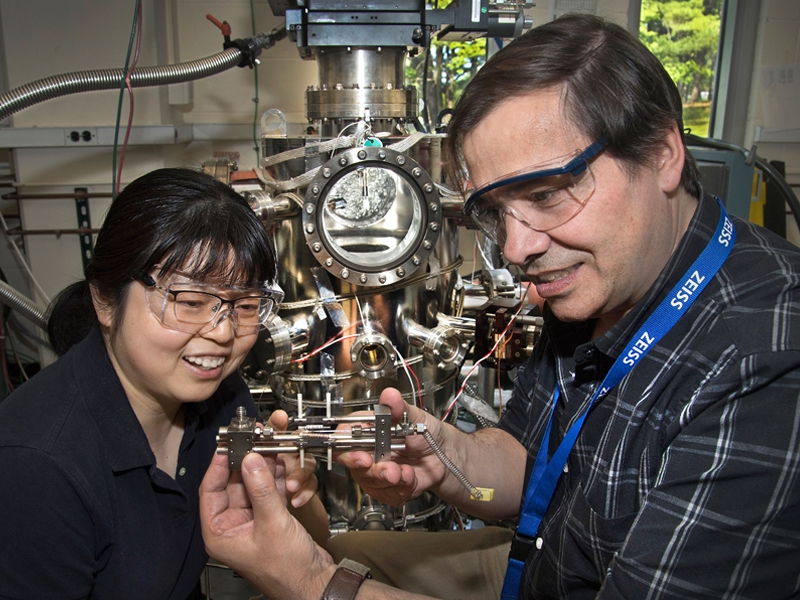Catalysts reduce the energy needed to make a chemical reaction take place. They’re essential in industry, used for making everything from fabric to synthetic plants. Catalysts are used in the production of many chemicals and fuels.
Over the years, people have tried to understand how catalysts work in hopes of making them even better. To understand how a catalyst works, you need to see what happens at its active sites during chemical transformations. This is a very complex thing. You need a lot of tools to see how the catalyst changes over time, especially under harsh environmental conditions like high pressures and temperatures. Synchrotrons – incredibly powerful sources of light that produce X-rays – can provide a unique look into how these catalysts work.
When I first arrived at the Department of Energy’s Brookhaven National Laboratory (BNL) 29 years ago, scientists were for the first time seriously proposing the use of a synchrotron to study catalysts. At that time, there was a lot of activity in the National Synchrotron Light Source (NSLS), a DOE Office of Science user facility. At the end of my job interview, the head of BNL’s Chemistry Department asked, “How much money do you need to do this kind of science?” I said, “This is a very complex science. I need $750,000.” As a physical inorganic chemist, $50,000 was a lot of research money for him. But despite the price tag, he looked at me and said, “Okay, we’ll see what we can do.” He called up the person at DOE in charge of the catalysis program and said, “The young man looks very promising; we want to go into this new area. He needs $750,000.”
With that funding, my team and I used NSLS to study catalysts in very controlled environments. We created these environments by putting the catalysts in specialized ultra-high vacuum chambers originally developed by NASA in the 1960s. After setting the inside of the chambers to the conditions we wanted, we put them in the synchrotron. The hard and soft X-rays from the synchrotron made it possible to study the structural, electronic, and chemical properties of the catalytic material as well as how those changed during the reaction process.
There is still a big interest in the DOE Office of Science in understanding these catalytic materials. Since then, the NSLS has been replaced by its successor NSLS-II, which is also a DOE Office of Science user facility. With NSLS-II, we can use a high-intensity beam to do ultra-fast measurements. Now, we can make in-situ measurements of samples with highly diluted elements in times as short as milliseconds (a thousandth of a second). With this speed, we can now monitor catalysts’ properties during reactions very quickly. In catalysis research, the faster you can go, the better.
With this fellowship, I’m going to expand the work we’re doing at the NSLS-II to better understand catalysts’ properties and how they change during reactions. While we’ve been working on this project for about five years, this new funding will help us move it forward. This work will involve not just the NSLS-II, but also researchers at BNL’s Center for Functional Nanomaterials (a DOE Office of Science user facility), the University of Kansas, Stony Brook University, and Columbia University. In the spirit of this fellowship, any equipment we develop will remain at the NSLS-II, where it will be available for the entire catalysis community to use.
I think this project has the potential to make a big contribution to the field and I appreciate the opportunity the DOE’s Office of Science has provided me to lead it.
Original post https://alertarticles.info



